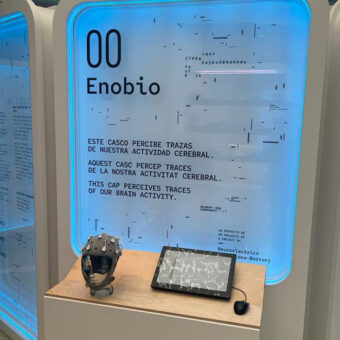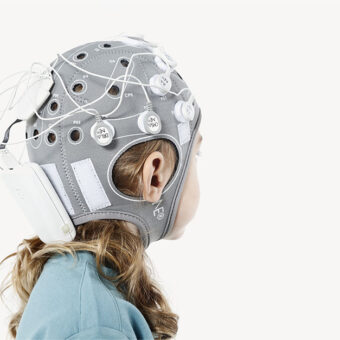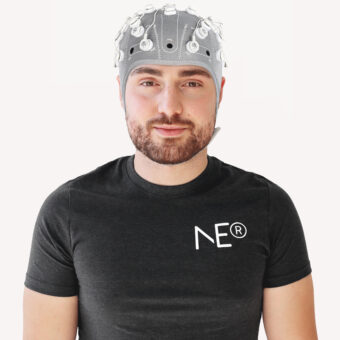Vegetative state, also known as wakeful unconsciousness, exists when a person is awake, but supposedly totally unaware. A person in a vegetative state is no longer supposed to be able to think, reason, relate meaningfully with his/her environment, recognize the presence of loved ones, or feel emotions or discomfort. A vegetative state is called persistent if it lasts for more than four weeks. A person in a persistent vegetative state (PVS) is totally dependent for all care needs, cannot eat or drink, cannot speak, and is incontinent.
A person in PVS has periods when he/she is awake and periods when he/she is asleep, can cough, sneeze, scratch and even cry or smile at times. Sometimes they have automatic reactions to touch, sound and light, and sometimes their gaze happens to momentarily stop in the direction of someone at the bedside. These behaviors usually disconcert their loved ones who can interpret them as an indication that the person in a PVS has awareness but is unable to communicate.
It has been accepted that all these behaviors are automatic and so do not require any functioning of the thinking part of the brain. The body still functions but the mind is unresponsive. But, is it really true? Researchers all over the world have been investigating consciousness in vegetative patients during the last decade with incredible results.
In 2005 the British neuroscientist of Cambridge University A. Owen and his team started using functional MRI (magnetic resonance imagining) to show consciousness during PVS. Since then Owen has been actively working in consciousness detection in locked in patients. One of his many articles, published in Nature, reports a 24-year-old patient alive but unresponsive after a car accident. He was put into a functional magnetic resonance imaging (fMRI) machine and asked questions. Incredibly, he provided answers. A change in blood flow to certain parts of the man’s injured brain convinced Owen that the patient was conscious and able to communicate. It was the first time that anyone had exchanged information with someone in a vegetative state. In another case described in this article, Owen took fMRI scans of a 23-year-old woman in vegetative state who was asked to imagine playing tennis and walking through the rooms of her house. Motor cortex brain activation patterns were similar to healthy volunteers who were imagining these activities.
Owen is actively trying to take his methods to the clinic. fMRI is a very expensive technique difficult to take out of the lab. The use of electroencephalogram (EEG) is definitely the best alternative. EEG is cheap, relatively portable and fast (with milliseconds of lag compared with 8 seconds for fMRI), meaning that the research team can ask up to 200 questions in 30 minutes. New Scientist describe his studies regarding the use of EEG to detect signs of awareness in vegetative patients. 16 brain injury patients were examined and 12 healthy users were used as controls. Participants were asked to imagine moving either their hands or toes while wearing an EEG monitor. They found that, like the healthy people, three of the brain injury patients could reliably generate two distinct brain activity patterns based on the command. One patient did it more than 200 times, which is even more than the healthy participants managed. Owen claims “Clearly this guy is not in a true vegetative state. He’s probably as conscious as you or I are.”
The use of EEG opens a new way of communication with locked in patients. Canadian media has reported the story of Leonard Rodrigues who suffered from brain trauma following a heart attack in 2010. A consciousness scanner designed to measure patient’s level of conscious awareness using EEG technology (Enobio is used to record the brain activity) was tested with him. This technology offers the potential to record and analyze brain activity that underlies consciousness, thus eliminating the need to rely on outward behavior. In Leonard’s case, the test showed that while his body was damaged, his brain was intact.
Clinicians claim “We can use this type of technology to ask them what sort of entertainment they want to be exposed to? Do they want to watch TV or do they want to listen to music? What type of music? What time would they like to be fed… activities of daily living which are entirely under the control of these people around them, the people caring for them”.
Many researchers disagree that these individuals are conscious and there is a huge controversy about consciousness in PVS findings, but on the other hand there is strong proof to say that maybe not all of them, but some of these patients may be conscious, but essentially trapped in their bodies.
The possibility of using EEG to communicate with these patients give them the chance of revealing relevant information to their doctors which can definitely improve their quality of care and life and the possibility of interacting with their loved ones. Of course it gives also the possibility of asking the controversial question we all are thinking about, do you prefer to stay as you are or pass away?
photo credit: Darwin Bell via photopin cc



